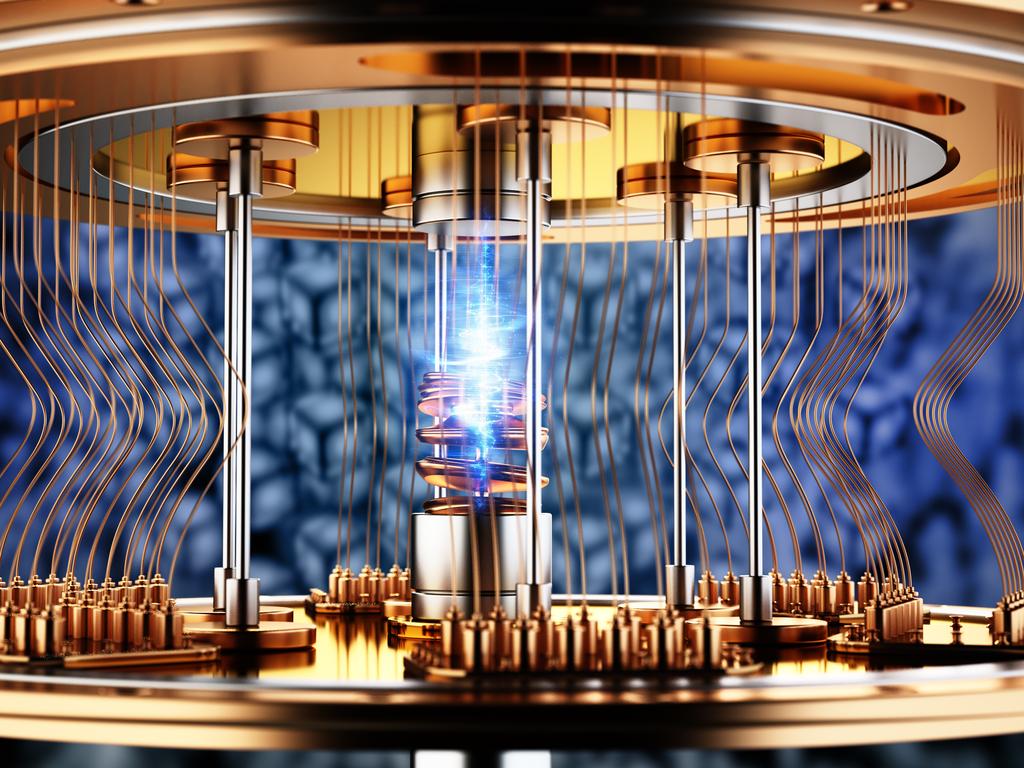‘Google broke time itself’: Huge breakthrough with new quantum chip
Google has a new quantum chip which can complete a task, in five minutes, that a normal computer would take ten septillion years to do.
Google has announced its new quantum chip has achieved two “astonishing” breakthroughs.
It’s big news in the quantum computing world — a nascent technology with almost unlimited potential.
The quantum chip proved two things: that errors can be reduced exponentially by using more qubits, and that quantum computers can complete almost impossible tasks.
Hartmut Neven, the founder and lead of Google Quantum AI, said the quantum chip dubbed “Willow” is paving the way for a “useful, large-scale quantum computer”.
I’ll explain why this is a big deal.
Normal computers do calculations using a binary system, with transistors switching between “on and off”.
A binary digit or “bit” is a logical state, with one of two possible values.
Over the years, “classical” computer chips have become incredibly powerful. For example, a flash memory chip was made by Micron last year with 5.3 trillion transistors and three bits per transistor.

Quantum computers work differently.
They use a qubit (“quantum bit”), rather than a bit. The idea is that qubits can exist in a superposition — meaning two states at the same time. The concept was popularised through the grim “Schrodinger’s Cat” thought experiment.
It has the potential to increase computing power exponentially.
However, quantum computing has been plagued by errors caused by a loss of quantum coherence and noise.
And like fusion power, quantum computing has perpetually been “five years away” — for the past 20 years.
But the news about Willow looks to be a crucial advancement.
Error correction
Firstly, the major problem with error correction has been addressed.
Mr Neven explained the problem like this: “Typically the more qubits you use, the more errors will occur, and the system becomes classical.”
However, he said the results showed that “the more qubits we use in Willow, the more we reduce errors, and the more quantum the system becomes”.
According to Mr Neven, the chip has cracked a “key challenge in quantum error correction that the field has pursued for almost 30 years”.
Just wait 10 septillion years
Secondly, the new chip has proved the incredible capacity of quantum computing.
It performed a standard benchmark computation in under five minutes that would have taken one of today’s fastest supercomputers 10 septillion years.
I feel like I have to repeat that. The chip completed a task in five minutes that a normal computer would take 10,000,000,000,000,000,000,000,000 years to do.
“This mind-boggling number exceeds known timescales in physics and vastly exceeds the age of the universe,” Mr Neven said.

Multiple universes?
Intriguingly, Mr Neven added that the result indicated that multiple universes could exist.
“It lends credence to the notion that quantum computation occurs in many parallel universes, in line with the idea that we live in a multiverse, a prediction first made by David Deutsch,” he wrote.
His suggestion about the multiverse touches on the as yet unsolved problem of how to interpret quantum mechanics, the most popular being the Copenhagen interpretation (Shut up and calculate!).
Willow was fabricated in a new fabrication facility in Santa Barbara, California and has 105 qubits.
You can read Mr Neven’s detailed explanation on Willow here.
An article was also published in science journal Nature with the more mundane title: “Quantum error correction below the surface code threshold.”
The team next plans to demonstrate a “useful, beyond-classical computation” that is “relevant to a real-world application”.
The news drew plenty of attention online. Kevin Chen wrote on X: “While everyone watches AI, Google broke time itself. Their quantum chip just solved a problem that would outlast the universe — in 5 minutes.”
Mario Nawfal wrote: “Google’s Willow quantum chip makes classical computers look like dinosaurs!”
Alphabet, the parent holding company of Google, had a good day on the stock market after the announcement, with shares jumping 5 per cent to $US196.71.
Originally published as ‘Google broke time itself’: Huge breakthrough with new quantum chip





